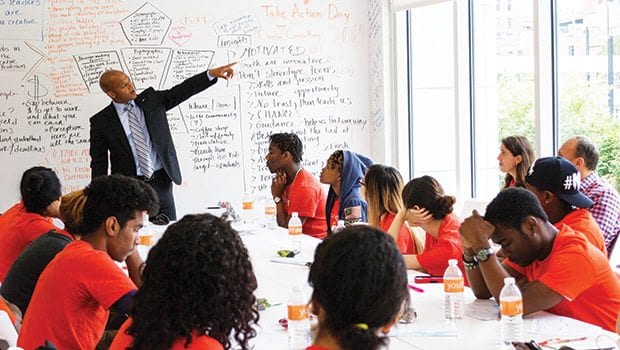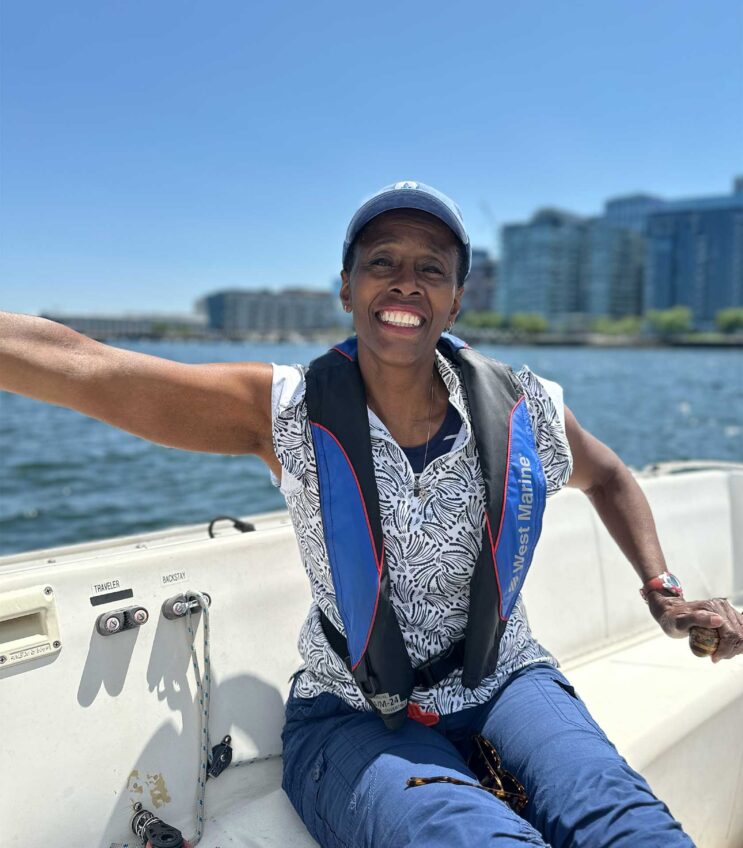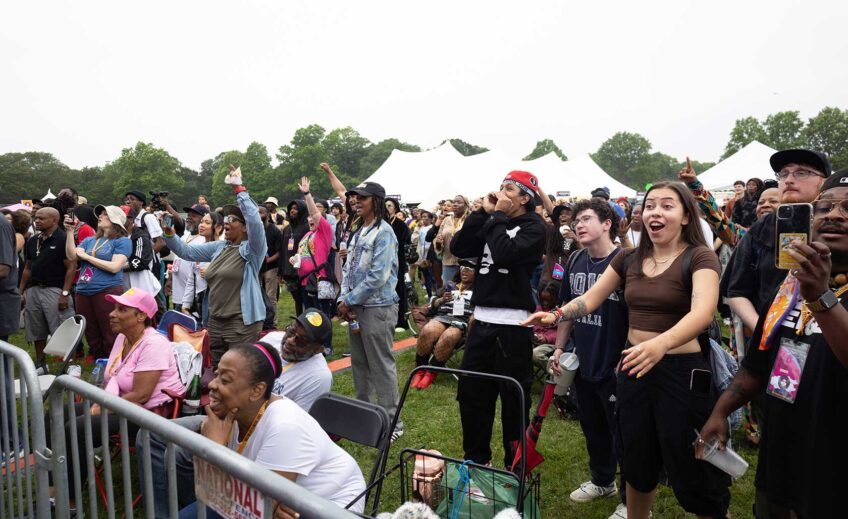Empowering the next generation
Youth Design creates transformative experience for teens

“I know how transformative a creative environment is to an urban teen,” says Tony Richards, Executive Director of the Boston-based nonprofit organization Youth Design. Richards, who lives in Dorchester not too far from where he grew up, was blown away when he was approached last year about the organization and the opportunities it offered. He was so impressed that he accepted the position of Executive Director.
Founded in 2003 by Denise Korn, Youth Design’s mission is “to empower talented urban youth to pursue higher education and a promising career by engaging the professional design community to mentor, educate, train and employ the next generation.” The organization is run in partnership with the Boston chapter of the American Institute of Graphic Arts (AIGA) and Boston’s Private Industry Council (PIC).

Author: Photo courtesy of Youth DesignYouth designer Isaiah Walker met his mentor Anthony Clayton, president of Bluebird Graphic Solutions and learned more about his job opportunity.
The fact that Boston’s design community buys into the mission of the organization and is actively engaged with the youth and its programs is testament to Youth Design’s uniqueness. According to Richards, “all of our work has been developed on a shared responsibility of an entire industry, the design community at large.” The organization works with more than 15 distinct design professions to encourage and support “the next generation of young talent into the field of design and the creative economy.”
Students typically learn about the nonprofit through its partnership with the Boston Public Schools. “We’re looking for creative urban teens, essentially young people who may self-identify as being artistic, they may like to draw, they may be involved in some sort of creative groups in their school, they may just want to learn more about design, and they have those intangibles that they just want to work hard,” says Richards. “We’re not looking for them to come in already knowing everything.”
Recruitment
Approximately 50 students per year are recruited for Youth Design’s two-year program. Teens are accepted during the summer between their high school sophomore and junior year.
Unlike some organizations, there are no income guidelines for involvement in Youth Design.
“It’s a good thing because we get an interesting mix,” says Richards. “You have students that are from Boston who may be from affluent families but live in Roxbury, and then you may also have a low-income young person from Roxbury, Dorchester or Mattapan, who can learn from that other student.” Program participants come from Boston exam schools and high schools.
“It’s an interesting organic mix. I think there’s a lot of peer-to-peer mentorship going on which I think is a big component of our organization,” adds Richards.
Youth Design offers year-round programming that includes a school-year curriculum, mentoring and academic support, as well as field trips and cultural experiences. During the school year, students attend workshops on Saturdays; during the summer, they’re held on Thursdays.In addition, first-year students are enrolled in Fundamentals In Design, held at the Massachusetts College of Art and Design. One of the benefits: they receive a dual credit, for both high school and college.
One of Youth Design’s core platforms is its summer immersion program that includes a full-time, seven-week paid design internship. Students work 30 hours a week during July and August at a wide variety of leading design companies, in-house agencies and communications firms. The teens are matched with a specific mentor at their host firm and are expected to complete a project by the end of the summer.

Author: Photo courtesy of Youth DesignAbove, youth designers pose for a celebratory photo on the steps of the Institute of Contemporary Art (ICA) after participating in an interactive workshop led by Cause Consulting. The workshop focused on developing creative ideas on a social issue that resonated with them personally.
Another feature of the program is Youth Design Academy, which is offered to students in their first year. Youth Design Academy provides real-world training with hands-on art and design skill-building, along with access to professional designers and design workplaces. Teens also have access to a state-of-the-art design studio year-round equipped with large-screen computers, a large-format color printer and creative software.
Youth Design emphasizes the importance of completing high school and going onto college. As part of the two-year commitment (parents must give their permission), students receive ongoing professional development in the areas of design education, design skills training, workforce readiness and youth development.
The organization has a 100 percent high school graduation rate and an 80 percent college graduation rate, says Richards. He attributes that success to their tutorial and other support services, such as assistance with the college application process. Another big plus: collaboration with partners such as uAspire, a Boston-based organization (with offices in Miami and San Francisco) that partners with high schools, community organizations, and colleges to make college more affordable for students and their families.
Of Youth Design and the transformative experience it provides, Richards believes “if you’re hungry, willing to learn, willing to exceed, and are creative and have a creative spirit or an artistic spirit, you definitely can thrive in the different components of the organization.”
For more information on Youth Design, visit www.youthdesign.org.
This article appears in our May issue of Banner Biz which you can read here.







